If you don’t have time to read this article in full, then the basic differences between micro 4/3 vs APS-C cameras is that micro four thirds offers a lighter camera more suitable for travel and for daily use, while APS-C cameras are better where image quality and the use of extreme wide-angle lenses is necessary.
When looking at the smaller camera formats, both micro 4/3 (also known as MFT or micro four thirds) and APS-C cameras appear among the most popular models on offer, but what is the difference between them?
This article covers the pros and cons of MFT vs AP-C, along with descriptions and examples of each, so that you can be sure which of these more portable formats is right for you and your photography.
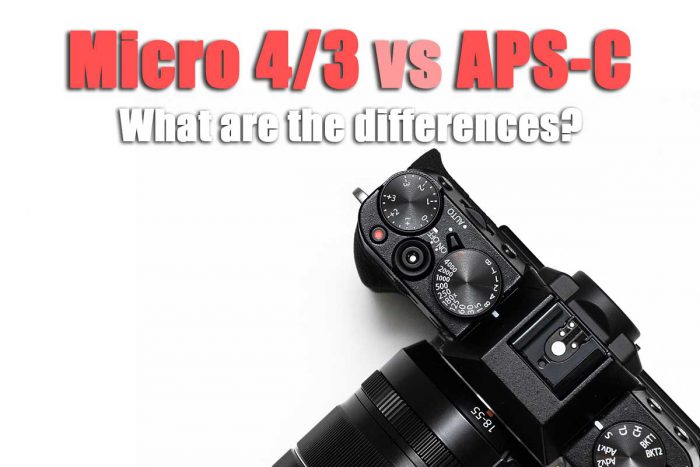
What is a Micro 4/3 vs APS-C Sensor?
When you see micro 4 3 or APS-C in a camera description, this refers to the size of the sensor. Sensor size has a number of knock-on effects to how a camera behaves and handles, which are covered below.
In general, a larger sensor size is better for image quality, but at the expense of portability and cost.
Micro 4/3 Sensor
The first micro 4/3 cameras were only released in 2008, from a standard developed by Olympus and Panasonic for their iterations of mirrorless cameras.
The micro four thirds sensor size is 17.3 mm wide × 13.0 mm high (21.6 mm on the diagonal), which is comparable to the 110 cartridge film developed by Kodak.
A micro 4/3 sensor gets its name because this width and height is in the 4:3 aspect ratio, which is the standard medium format ratio. Standard DSLRs and cameras that use 35mm film have a 3:2 aspect ratio, so comparing the micro four thirds vs APS-C cameras, the micro four thirds cameras are better suited for making prints at standard medium format sizes like 6 x 4.5 inches.
You might have heard of the four thirds system (without the micro in front), which is an older system from Olympus, originally designed for DSLRs.
This 4/3 system needed space for the reflex mirror of the DSLR, which is not present in mirrorless cameras.
Therefore, comparing micro 4/3 vs 4/3, the sensor size is the same, but there is no longer any space left between the lens mount and the sensor for this mirror or pentaprism, meaning that cameras using micro 4/3 can be made much smaller and can fit a much wider range of lenses, even from third-party manufacturers with the necessary adapters.
APSC Sensor Size
The APS-C sensor is from an older system, originally designed for film cameras and which has now been repurposed for digital use, particularly for DLSRs, but also for some mirrorless cameras.
The APSC sensor size is 25.1 mm wide × 16.7 mm high in most cases, giving it a 3:2 aspect ratio to match standard 35 mm film, and making it most suitable for standard print sizes for film, like 6 x 4 inches.
Canon make slightly smaller APS-C sensors, at 22.3 mm wide x 14.9 mm high, but this maintains the 3:2 aspect ratio.
Both of these sizes are smaller still than the original APS-C film that was produced from 1996 by Kodak, and significantly smaller than 35 mm film, but comparing APS-C vs micro four thirds, the APS-C size is 86% larger than an MFT sensor.
APS-C vs Micro 4/3 Size Comparison
You can directly compare the real sensor sizes of APS-C and MFT sensors in the image below, with a full frame, 35mm sensor size as comparison.
You can see that micro four thirds sensors are significantly smaller than APS-C, and you can see their different aspect ratio. The implications of this are discussed below.
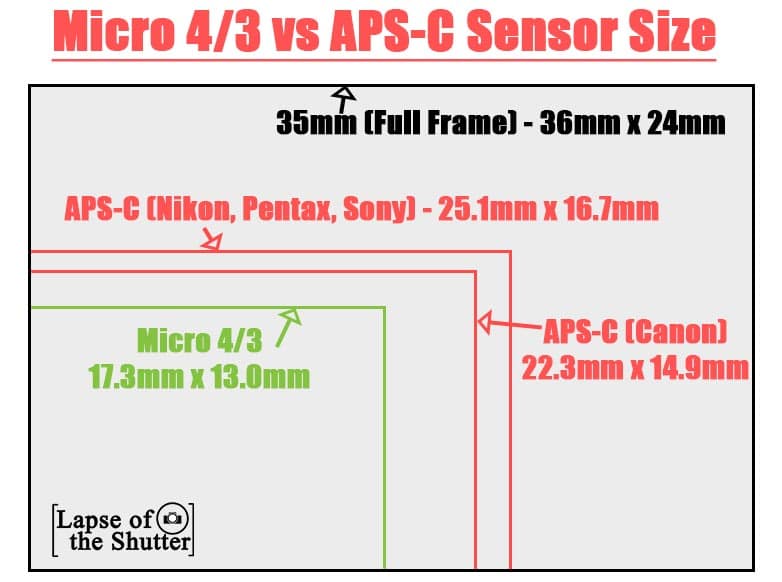
Field of View & Crop Factor Comparisons
The main result of the different sensor sizes seen above is seen in their relative fields of view, otherwise known as a crop factor.
You most probably already know that the shorter the focal length, the wider the field of view. This is why short lenses, such as those with a focal length of 24mm, are also referred to as wide angle lenses.
But, the actual field of view that you see through the lens is dependent on the sensor size.
This is because a standard lens casts a circle of light onto the image sensor, which is then recorded to make your image, but a smaller sensor can only use the most central part of this circle of light.
This has the same effect as zooming in, and means that smaller sensors have a smaller field of view with the same lens. You can see an example of this in the image below.
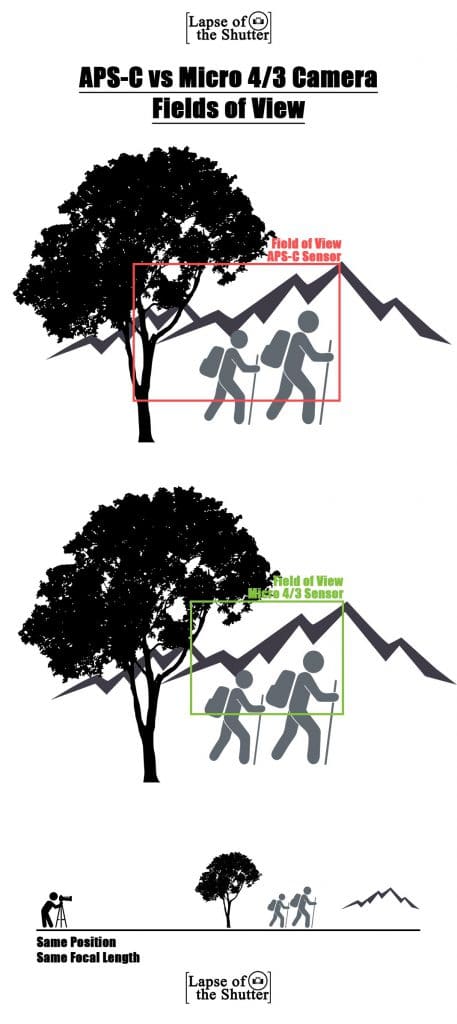
This reduced field of view with smaller sensors is most usually referred to as a crop factor. This is displayed as a number that shows how much you must multiply the full frame focal length by in order to arrive at the apparent focal length for your smaller sensor.
The crop factors for the APS-C and MFT cameras are:
- Full Frame = 1
- Nikon, Pentax & Sony APS-C = 1.5
- Canon APS-C = 1.6
- Micro Four Thirds (Panasonic & Olympus) = 2
So, a 24mm lens used on a full frame camera would have an apparent focal length of 24mm, as expected as this is the reference to which we compare other sensor sizes.
The same 24mm lens used on a Nikon APS-C camera would have an apparent focal length of 24 x 1.5 = 36mm.
And on the Canon APS-C camera, the 24mm lens would have an apparent focal length of 24 x 1.6 = 38.4mm.
Finally, the an Olympus Micro Four Thirds camera using the 24mm lens would have an apparent focal length of 24 x 2 = 48mm.
Depth of Field
Although depth of field is not a primary concern for most photographers, it is useful to know that in general, smaller sensors result in a larger depth of field.
This means that the area that is ‘in focus’ is increased with a smaller sensor for the same focal length and aperture, where the subject is in the same position in the frame.
This is because in order to get the subject to fill the frame in the same way, you will have to move further away with a camera with a smaller sensor, which increases the depth of field. This is directly connected to the crop factor seen above.
Of course, you can always open up the aperture to decrease depth of field, so this isn’t a big issue in practice, but might help sway your decision if you are a portrait photographer.
Resolution & Pixel Size
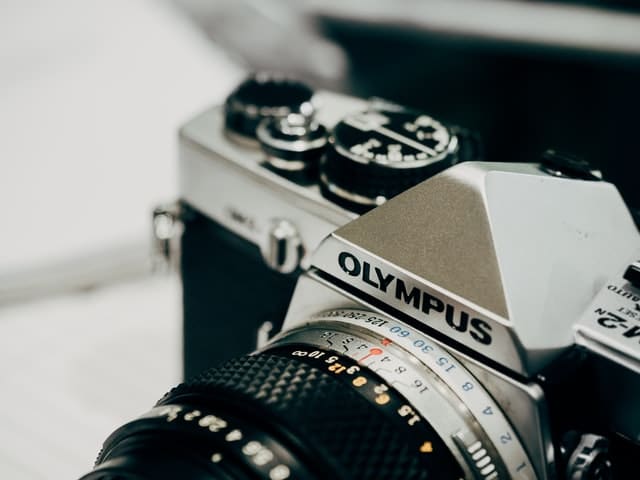
Resolution of a camera is measured in pixels, with each of the pixels seen in your photo file corresponding to a physical pixel on the sensor.
Pixel size is not fixed, with some models of camera having larger or smaller pixels even within the same camera format due to differing resolutions, but in general, APS-C cameras tend to have smaller pixels in their most recent models, due to sensor innovation.
For example, the Canon M6 Mark II, an APS-C camera, has a pixel size of 3.20µm from a 32.5 megapixel resolution, while the Olympus OM-D E-M1, a micro 4/3 camera, has a pixel size of 3.72µm from a 16.3 megapixel resolution.
But why does this matter?
Simply put, the larger the resolution, the better the image detail a camera can record, but this also applies to pixel size.
That means that the larger the individual pixels on a sensor, the better for low light performance, for reducing noise and for increased dynamic range.
So ideally you want a camera with both a large resolution and a large pixel size.
In general, a physically larger sensor will have larger pixels for the same resolution, meaning APS-C sensors are better for image quality. They also tend to offer higher resolutions due to their increased size.
Overall Size & Portability

If you are looking for a camera for travel, then it pays to go for something both small and portable. There’s nothing worse than leaving your large, heavy camera at home and missing a photo, when you could easily have taken a small, pocket sized camera, albeit one with slightly worse image quality, that would have got you that picture.
In most cases, a larger sensor such as that on APS-C cameras, means that the camera itself will be both larger and heavier.
If you are concerned at all about portability, then micro 4/3 is the way to go, or you could go for even smaller sensor sizes for a truly portable camera, with something like a 1/2.3″ sensor. Cameras in this bracket are covered in my article on the best cameras under $300.
Lens Compatibility
Not only does a larger sensor mean a larger camera body, it also often means larger lenses.
Micro 4/3 cameras not only benefit from smaller lenses than APS-C cameras, but because of the specific architecture of the lens mount, it is possible to use many brands of lenses outside of the standard Olympus and Panasonic lenses, with the appropriate adapter.
This is particularly useful if you intend to look for cheaper, used lenses from older camera systems, as it can really reduce the overall cost of your camera system.
APS-C cameras can of course use lenses outside of their own system, but you are much more limited with your choice.
Micro Four Thirds vs AP-C: Pros & Cons
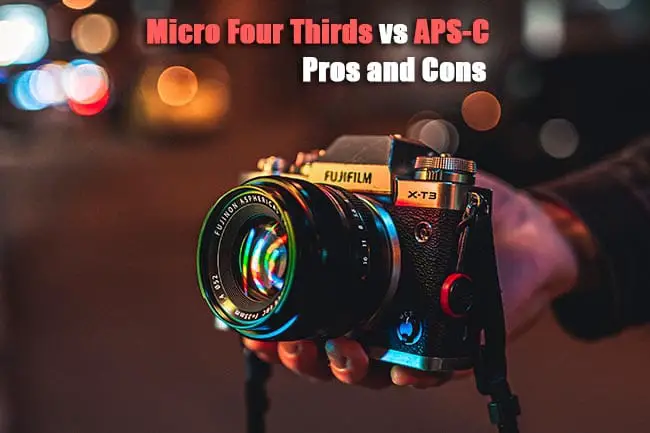
So after covering all of the main differences between micro four thirds vs APS-C cameras, what are the overall pros and cons of each, and in what situation would you want either?
Micro 4/3 Pros:
- 4:3 aspect ratio is better suited for printing photos at standard medium format sizes, like 6×4.5 inches.
- You can use a wide range of third-party lenses from the past and present with appropriate adapters, comprising hundreds of lenses, many for cameras no longer in production and available for a very low price.
- Lenses can be much smaller and shorter for the same apparent focal length, also reducing their cost.
- Camera bodies tend to be much lighter and more portable.
- The smaller sensor generates less heat, which can help reduce noise in long exposures.
- Increased depth of field means that you are better placed for landscape photography, particularly without a tripod.
Micro 4/3 Cons:
- Smaller sensor size means that image quality doesn’t quite match APS-C in most cases.
- Large 2x crop factor means that it is difficult to get ultra-wide angle lenses.
- There are no models with optical viewfinders – only electronic viewfinders.
- Only two real manufacturers of camera bodies in Olympus and Panasonic, meaning not many use cases are catered for.
APS-C Pros:
- 3:2 aspect ratio is better suited for printing photos at standard 35mm photo sizes, like 6×4 inches.
- Larger sensor size means better image quality, often coupled with larger pixels.
- Less noise and more dynamic range in general, although micro four thirds cameras might beat this in long exposure images.
- Both mirrorless and traditional DSLR models are available with this sensor size, meaning there are many more possible use cases.
- Smaller depth of field is better suited to wedding and portrait photographers.
- A very popular sensor size that doesn’t look like it will be discontinued any time soon.
- Easier to get an extreme wide-angle lens.
APS-C Cons:
- You don’t have the same wide range of older lenses available as for MFT cameras.
- Larger lenses and camera bodies makes these models less portable and more expensive.
- Many would be better off either choosing a full frame camera or M43, as some of these models are a bit stuck on the fence in terms of what they want to do.
I hope that this has helped make the differences and similarities between micro four thirds and AP-C cameras clear in your minds. Either of them are excellent choices for most photographers, with micro 4/3 ultimately better if you will be travelling or using your camera away from home for long periods of time, and APS-C better for situations where image quality is key.
But you don’t only have to consider APS-C or M43 cameras, there are also full frame models available. Comparing full frame vs micro 4/3 for landscape photography, there is no contest in full frame cameras offering better image quality and better overall performance. Take a look at some of my photos, all taken with a full frame camera for proof!
Read More:
What are the best cheap vlogging cameras?
What are the best cameras under $300?
How to find the best DSLR camera for beginners
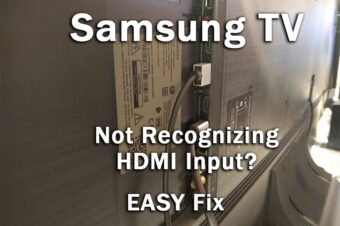
![What is the Best Drawing Tablet for Photoshop? [TESTED]](https://www.lapseoftheshutter.com/wp-content/uploads/2020/06/best-drawing-tablets-for-photoshop-340x226.jpg)
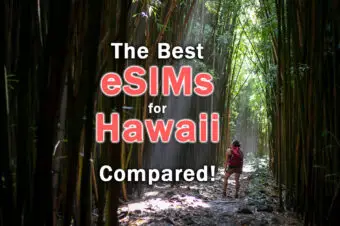
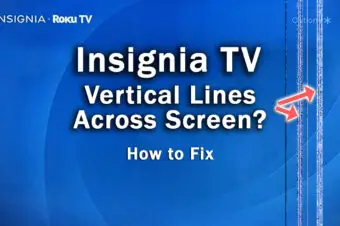
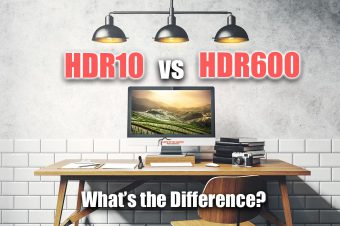
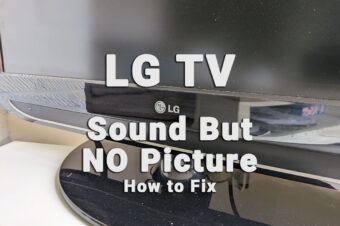
6 Responses
Geof
‘Depth of field not of primary importance for most photographers’
Really?
It’s one of the most important considerations I have. I currently own a Lumix G9 and would love a Fujifilm XT-4 just to get a shallower dof.
Tim Daniels
Certainly you are welcome to disagree, but really DoF is only relevant to portrait and macro photographers – those who are trying for a very shallow depth of field – but isn’t as relevant to the majority.
For most photographers shooting landscapes and general photos, they want a large DoF, but are usually not too concerned with the specifics of how large.
For your two cameras as an example, shooting at 14mm and f/11 and focused at the hyperfocal distance, photos from the Lumix G9 will be in focus from 0.58m to infinity, while the Fuji XT-4 will show sharp focus from 0.44m to infinity (as determined by the PhotoPills calculator).
So for landscape work at least, you’re not going to see much difference between the two cameras.
Benjamin
You have it upside down. It is a silly myth that APS-C or even full frame is somehow safe from being abandoned while M4/3 is at risk of being abandoned. Nothing could be further from the truth. Full frame is most at risk of becoming an abandoned technology, followed by APS-C. It is far more likely that eventually M4/3 and medium format will be the only ones remaining. The technology doesn’t stand still and miniaturisation has been going on ever since photography was invented. There are more and more manufacturers now committing to M4/3. Zeiss even makes cinematic lenses for M4/3 that cost 4.000-10.000 USD each. Voigtländer makes a series of their legendary Nokton photography lenses for M4/3 that cost 800-1000 USD each. Sony has just released a 20 MP M4/3 sensor. JVC and Kodak have adopted M4/3. A new cinematic camera system that has already become a legend, the Blackmagic, is also based on M4/3. The ecosystem around M4/3 has already gone well beyond critical mass and it has become far too large to be abandoned. As technology advances and time passes more and more manufacturers will join this ecosystem.
Tim Daniels
Thanks for your thoughts!
There still remains far more APS-C and full frame cameras, which have been unchanged for years.
Micro 4/3 (which has only been around since 2008) replaced the original 4/3 system, which is now discontinued, which I think suggests that this is a less stable system.
John Ellis
Thanks. I ejoyed your informative article.
Tim Daniels
Thank you!